The Way of Santiago de Compostela. Ultreya, Don’t Stop. Keep Going.
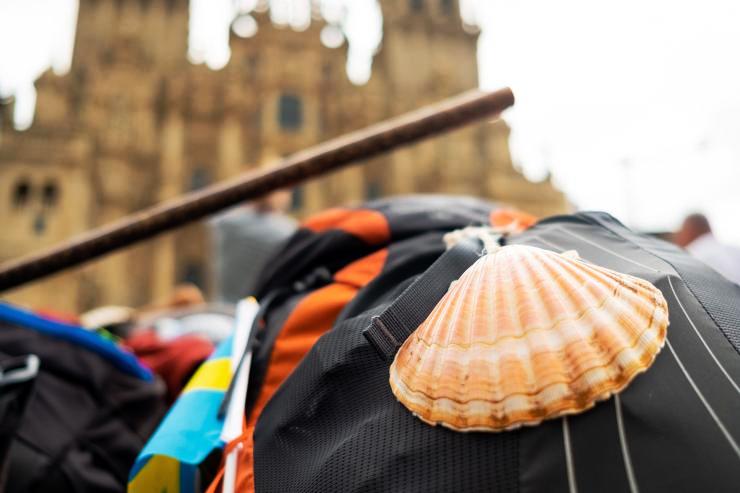
It is one of the best-known walks in the world. It is visited by thousands of pilgrims every year. Let’s retrace the journey from its birth between faith and history.
The geography of the religious world, the Catholic one in particular, is crisscrossed by a web of paths that unite places that are significant from a devotional point of view. In Asian cults, characterized by the cycle of rebirths, these itineraries are circular, with no beginning or end and can be followed indefinitely. In monotheistic faiths, on the other hand, they are lines that point towards single points, symbols of a journey of personal faith that has as its objective the encounter with God.
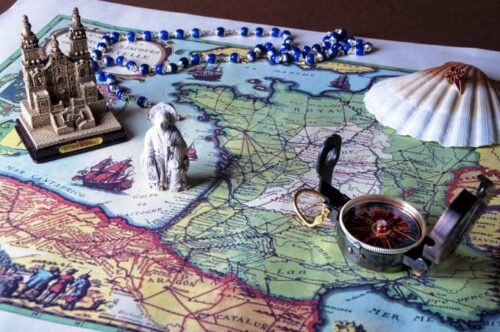
Photo: 123rf
The Christian world is crossed by bundles of paths that intertwine, overlap, and branch out and which, like blood capillaries, feed the body of faith. Among these routes, one of the best known is certainly the Camino de Santiago or rather the Caminos de Santiago. In fact, even in this case, it is not possible to speak of a single path in terms of a pilgrimage: the only common element is the final destination, the locus sanctus which, in the case of Santiago, is dedicated to the apostle Saint James (Tiago, in fact), the brother of John and son of Zebedee.
Ambitious and not exactly calm in temperament, the apostle is described by the Codex Calixtinus as a ‘saint of admirable strength, blessed
in his way of life, astonishing for his virtues, of great ingenuity,
of brilliant eloquence’.
The Gospel of Mark (10, 35-40) recalls that both he and his brother John asked the Master to sit in his glory on his right hand and on his left.
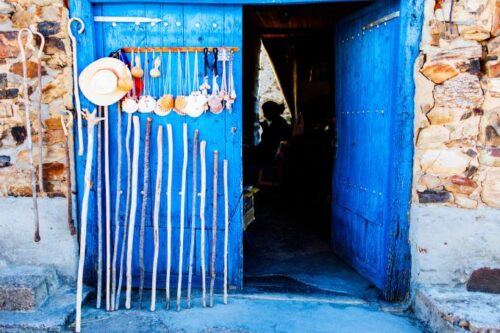
Photo: 123rf
Tradition has it that James, after Pentecost, began to preach arriving as far as Zaragoza, in Spain. Here, demoralized by the lack of enthusiasm with which the people welcomed the Word of the Lord, he remained in prayer until, on 2 January 40 AD, the Madonna (Virgin Mary) appeared to him from the top of a Roman column made of quartz, who, while urging him to continue his evangelizing work, asked him to build a place of worship there, known today as the Church of Nuestra Señora del Pilar (Our Lady of the Pillar). James, refreshed by the miraculous encounter, embarked in Valencia – between 42 and 44 AD. – to return to Judea (present-day Palestine) where, because he contravened the edict of Herod Agrippa I which forbade all Christian preaching, he died by decapitation, becoming the first apostle to be martyred as is also attested by the Acts of the Apostles (12, 1- 2).
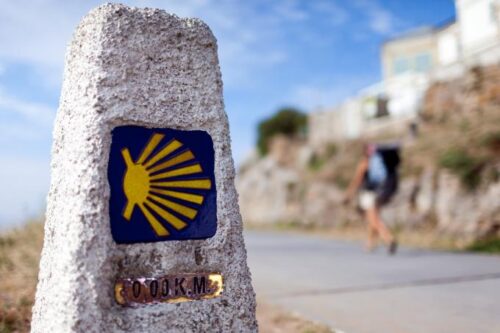
The Scallop Shell is used as a symbol of direction along the Camino, pointing pilgrims towards Santiago. Photo: 123rf
According to legend, two disciples of James, Theodosius and Athanasius, managed to transport the body and head of James to Iria Flavia (now Padrón, in Galicia), a city in the Roman imperial province of Hispania Terraconensis where the pedrón, the bollard to which the ship of the refugees moored, is still to be found. To escape persecution by the local praetor, Theodosius and Athanasius hid the remains of James about thirty kilometres from the coast. Here the relics were the object of devotion and pilgrimage until the fourth century, when the fall of the Roman Empire, the invasion of the Visigoths and the social and political upheavals that followed, caused all traces and evidence of the tomb to be lost. Only a faint memory of it, handed down orally, remained.
Spain under the Arabs
The Arab conquest of Spain in the 8th century led, especially in the kingdom of Asturias, to the emphasis of Christian values as opposed to the Muslim advance. It was in this context that Beatus of Liébana (730-798), author of the Commentaries on the Apocalypse, rose above all others. The Commentaries had an apologetic function, of ‘retaliation’ not only against Islam, but also those Christian schools close to Nestorianism, whose representatives, after being declared heretics, had found refuge with the Umayyad dynasty. One of these heresies was adoptionism which states that Jesus was adopted by the Father after his baptism in the Jordan giving him the divine nature. The bishop of Toledo adhered to this heresy. Of him, Beato was the most ruthless critic also for the friendly relations the bishop established with the Muslims.
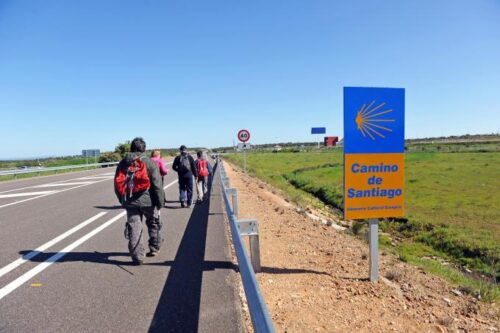
Group of pilgrims on the Camino de Santiago. Photo: 123rf
In his crusade against Islam, Beato also changed the interpretative paradigms of John’s Apocalypse: The Beast (originally the Roman Empire) became the caliphate, Babylon (originally identified with Rome) was likened to Cordova, the capital of the region occupied by the Muslims and the Apocalypse itself, which announced the end of the Roman persecutions, was transformed into the announcement of the Reconquista.And it was precisely with a view to the final victory against the infidels that the work of Isidore of Seville was dusted off, itself borrowed from the Breviarius de Hyerosolima, which testified to the arrival of James the Greater in Spain.
The apostle, therefore, became the leading saint in the fight against the Arab invaders, so much so that he was transformed, precisely by Beatus, into the patron saint of Christian Spain. All that was missing was tangible proof which was not long in coming.
King Alfonso II, the first pilgrim
In 813, Pelagius, a Solovian monk, followed some nocturnal lights which, like shooting stars, focused on a specific place in the Libredón forest. Following in its wake, together with his bishop Theodomir, Pelagius found the tomb of St. James and his disciples Athanasius and Theodore. The Field of Stars (campus stellae) of San Tiago became the Compostela of Santiago.Realizing the religious and political importance that the find offered to his kingdom, the king of Asturias Alfonso II left the court of Oviedo to go to the Locus Sancti Jacobi and thus became the first pilgrim on the Camino de Santiago.
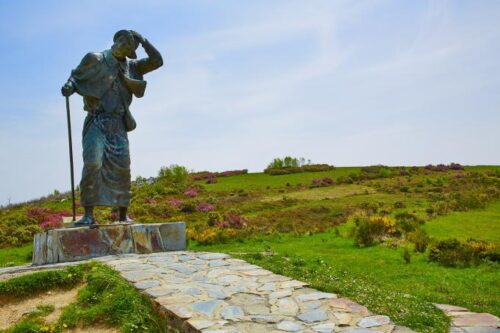
O Cebreiro Alto San roque top in the way of Saint James. Photo: 123rf
At the same time, San Tiago was transformed into Matamoros, the Ammazzamori (‘Slayer of Moors’). He, on the back of his white steed and with a drawn sword, led the Christian armies against those of Islam who, for their part, trusted in the Archangel Gabriel. The origin of Matamoros has its roots in the legendary battle of 844 fought at Clavijo (in northern Spain) whose historicity is still disputed among academics. According to tradition, in that clash between the troops of Ramiro I and the overwhelming numbers of the emir Abd al-Rahmãn II, the appearance of Saint Tiago led to the victory of the Christian troops over the Muslims.
In a short time, Santiago was elevated to an archepiscopal see. There the magnificent cathedral that we can still admire was built and became one of the holy cities of Christianity like Jerusalem and Rome.
Starting from the 11th century, with the development of the pilgrimage to Compostela promoted above all by the Cluniac monks, new paths were created. In the 12th century, Aymeric Picaud, a priest who made the pilgrimage to Santiago, unveiled the Codex Calixtinus, a volume divided into five books whose last part was a veritable guide for pilgrims with the four ‘official’ itineraries: the via Tolosana, the via Podense, the via Lemovicense and the via Turonense. The four ways joined at Puente la Reina to continue towards Santiago and then to Padrón along what was later called the French Way.
Arriving at the Cathedral
Once they arrived at the cathedral of Santiago, the pilgrims repeated gestures that still today remain fixed in the rituals of travellers: entering from the Portico de la Gloria they place their hand on the grooves engraved in the column of the Tree of Jesse to receive the blessing of St. James, they embrace his bust placed at the main altar to greet his companion on the way, and pay homage to the sepulchre where the remains of the apostle are contained together with those of Theodore and Athanasius. The birth of another rite dates back to the 13th century: the ‘botafumeiro’, i.e., the use of a censer that swings in a spectacular way along the central nave.
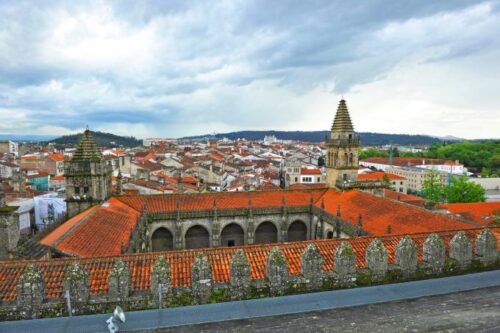
Panoramic view of Santiago de Compostela. Photo:123rf
The smoke produced by the incense is a symbol of the prayers of the penitents rising up to heaven. Instead, according to a more prosaic explanation, the scent of incense released by the botafumeiro would have served to mitigate the stench coming from pilgrims who were not entirely clean.The Camino continued up to Padrón because, as a medieval saying said, ‘Whoever goes to Santiago and not to Padrón, either makes the pilgrimage or doesn’t make it’. The stages of Finisterre and Muxia were later added to the traditional walk. On the first, it is customary to burn an item of clothing and take a bath in the icy ocean waters as a symbol of rebirth.
On the second, there is the sanctuary of the Virxe da Barca which recalls the legend of the apparition of the Virgin Mary on a stone boat who exhorted St. James to continue his mission in Hispanic lands.
Decadence and rebirth
However, the pilgrimage to Compostela was not a fact linked to spirituality alone: an edict of King Ordoño the Great (873-924) guaranteed freedom from their feudal lords to those who demonstrated that they had completed the Way by staying at least 40 days in Santiago. In the fifteenth century, the Hospital de los Reyes Catolicos is said to have been built; today it is a luxury hotel whose original function was to host pilgrims free of charge by offering them healthcare in case of illness.Subsequently, due to the black plague and wars, in the late Middle Ages, the pilgrimage experienced a decline which was accentuated in the 16th century with the Protestant Reformation, which forbade any devotion to the saints. Then at the end of the eighteenth century, the French Revolution dealt a further blow to the Compostellian cult, already undermined by the fact that, due to the transfer of the sepulchre of St. James to Ourense by Don Juan de Sanclemente in the sixteenth century to protect it from the raids of English pirates, there was no longer the certainty that the remains of the saint were still in Santiago or, as many claimed, had instead been lost.
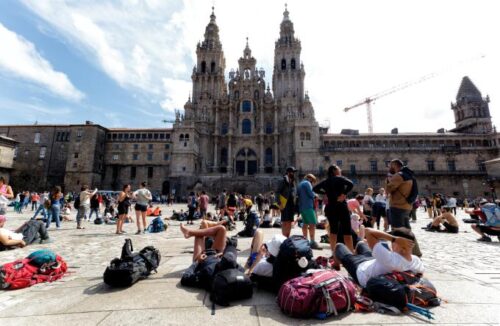
Santiago de Compostela. Pilgrims in the Plaza del Obradoiro. ©shootdiem/123RF.COM
It was not until 1884 when, with the bull Deus Omnipotens, Pope Leo XIII confirmed the authenticity of the relics following a series of studies carried out by the Pontifical Commission. However, we had to wait another century before the Camino de Santiago resumed its function of mass spiritual rediscovery as it had been in the Middle Ages. Among the many promoters and (re)organizers of the Way, there was Elías Valiña, parish priest of the tiny church of Santa Maria la Real in the town of O Cebreiro, best remembered for having invented the ‘yellow arrow’ which shows wayfarers the direction of the Way. The chalice in which the conversion of the bread and wine into the body and blood of Christ is said to have taken place is also kept in the church. Next to the altar, there is still the statue of the Madonna and child which would have witnessed the miracle of transubstantiation. The peculiarity of this statue, called Santa Maria la Real, is that it is said to be the representation of the apparition: the Madonna is sculpted while she bows, while delicately balanced, towards the chalice.
The Camino de Santiago, like all pilgrimages, will not give definitive answers to one’s inner search, but it is certainly an incentive to seek further. And ‘Ultreya’, the greeting that pilgrims exchange (in addition to the more common ‘Buen Camino’) means just this: don’t stop, go further. Beyond the next turn, further than you can see. (Photo: 123rf)
Piergiorgio Pescali/MC



